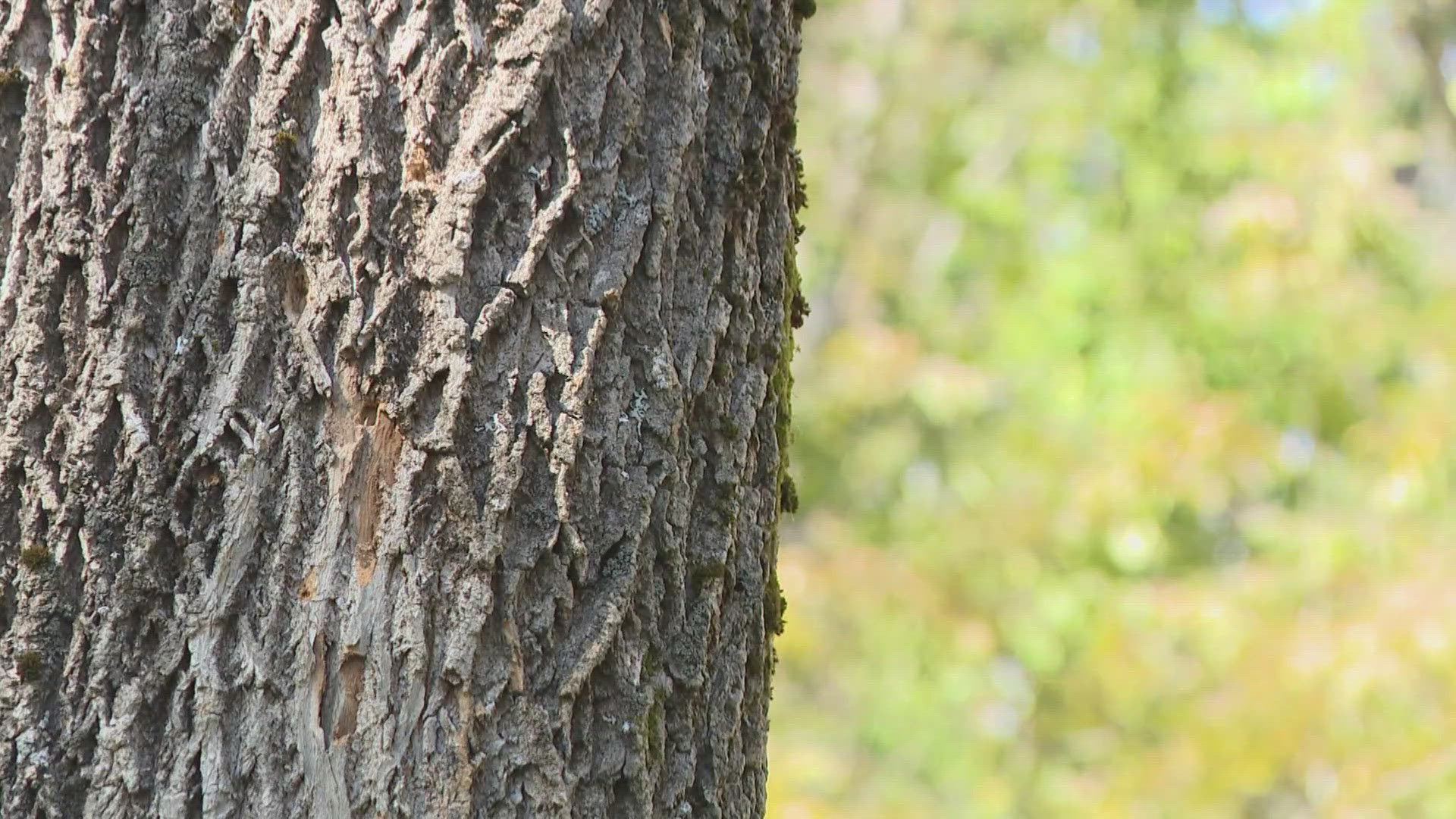ALFRED, Maine — Beautiful views filled with trees and wildlife are one of the reasons so many people decide to buy property in Maine.
The Vivians live in Alfred and said they didn't even need to see the inside of their house before buying. The land and trees around it was what sold them. Unfortunately, they're facing a sad new reality that many of those trees will soon be gone.
Their home sits in the middle of a colorful forest surrounding the property. As autumn begins each year, Teri Vivian expects to see her land glowing with the golden leaves from hundreds of ash trees. This year, Teri's view is rapidly changing.
"That one's dead, the ones behind it are dead, the ones standing on the edge of the property line over there are dead," she said, while pointing at hundreds of trees in her yard.
Her trees are infected with the emerald ash borer, an invasive beetle that eats away at ash trees and eventually kills them. For the Vivians, losing those ash trees means a lot more than just losing their beautiful scenery. For 17 years, they've depended on their deciduous forest to do much of their heating and cooling.
"In the winter, the trees conserve sunlight, which keeps our home warm and in the summer it gives us shade and keeps it cool. So, we’ll no longer have those advantages."
The Maine Forest Service first spotted the beetles in Aroostook County in 2018 and they've been moving south ever since. Teri Vivian's family was surprised at what little warning they got.
"We had somebody out from the Maine State Forest Service and he said most of these will be dead within a year." By the time Teri Vivian spotted the disease, it was too late to save most of the trees. She is now forced to go through the costly process of removing them.
On Wednesday, Teri Vivian had Christopher Everest come by to assess her yard. Everest works as a Consulting Arborist at Davey Tree. He said the trips to Alfred have started to become more frequent, as EAB poses more of a danger to the area.
"It's usually entire sections of the trees are coming down. So, it's a very hazardous situation once they actually become infested with this insect," he said. When a tree gets to that point, there is no choice left but to have it removed, which can be a lengthy and expensive process.
However, Everest said removal is not always the only option. It's actually the last resort. "Most of our work, when it comes to preventative insecticides, is to get the trees before they're infested." Everest said there is a pesticide treatment that can save the trees, but in order to use it you have to catch it early enough before most of the physical signs start to show.
"Once you start to notice the dieback of the tree, it's actually too late to begin the process."
Everest said he recommends taking preventative measures as soon as possible. "If you have Ash trees that are kind of a prominent part of the landscape that you really want to keep alive, we would recommend calling your arborist. Have them come out and take a look and get you on a program to do this injection before the tree begins to succumb to the insect."
Teri Vivian is hoping her neighbors will take that action, before their scenery changes forever.
"We'll find our way through this and navigate it as we need to. But, people have to know wherever you live, this is coming," she sad.
Her property makes up just a few acres in the Alfred community, where thousands of ash trees lie, also at risk of infection.

